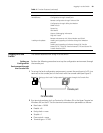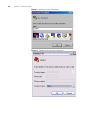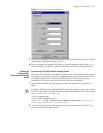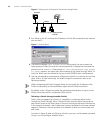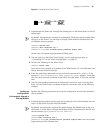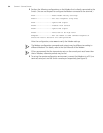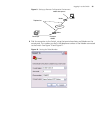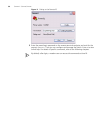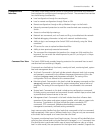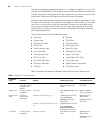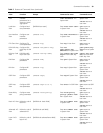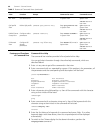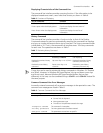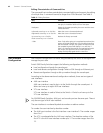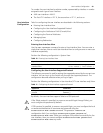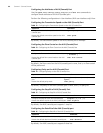
Command Line Interface 37
Command Line
Interface
The Switch 5500 family provide a series of configuration commands and command
line interfaces for configuring and managing the Switch. The command line interface
has the following characteristics:
■ Local configuration through the console port.
■ Local or remote configuration through Telnet or SSH.
■ Remote configuration through a dial-up Modem to log in to the Switch.
■ Hierarchy command protection to avoid the unauthorized users accessing the
Switch.
■ Access to online Help by entering ?.
■ Network test commands, such as Tracert and Ping, to troubleshoot the network.
■ Detailed debugging information to help with network troubleshooting.
■ Ability to log in and manage other Switch 5500 units directly, using the Telnet
command.
■ FTP service for users to upload and download files.
■ Ability to view previously executed commands.
■ The command line interpreter that searches for a target not fully matching the
keywords. You can enter the whole keyword or part of it, as long as it is unique
and unambiguous.
Command Line View The Switch 5500 Family provides hierarchy protection for command lines to avoid
unauthorized users accessing it illegally.
Commands are classified into four levels, namely visit level, monitoring level, system
level and management level:
■ Visit level: Commands in this level include network diagnosis tools (such as ping
and
tracert), commands for the different language environments of the user
interface (
language-mode) and the telnet command. The saving of the
configuration file is not allowed at this command level.
■ Monitoring level: Commands in this level include the display command and the
debugging command, and are used for system maintenance, service fault and
diagnosis. The saving of the configuration file is not allowed at this command
level.
■ System level: Commands in this level include service configuration commands,
including routing commands and commands for each network layer, and are used
to provide direct network service to the user.
■ Management level: Commands in this level include those that influence basic
operation of the system and system support module, which plays a support role
for services. Commands in this level include file system commands, FTP
commands, TFTP commands, XModem downloading commands, user
management commands, and level setting commands.
Login users are also classified into four levels that correspond to the four command
levels respectively. After users of different levels log in, they can only use commands
at the levels that are equal to or lower than their own level.
To prevent unauthorized users from illegal intrusion, the user will be identified when
switching from a lower level to a higher level with the
super [ level ] command. User
ID authentication is performed when users at lower level become users at a higher
level. In other words, the user password for the higher level is needed. (Suppose the



